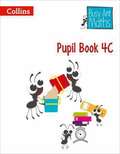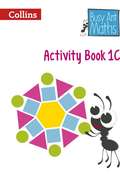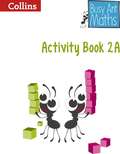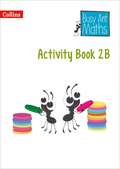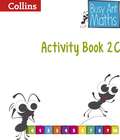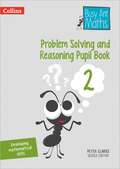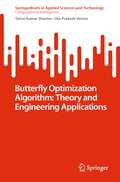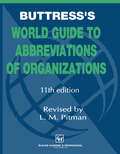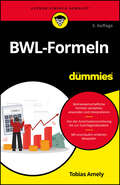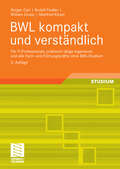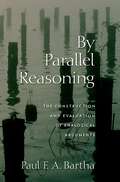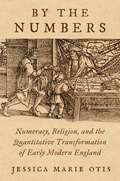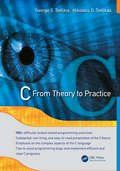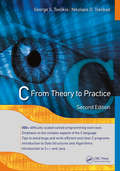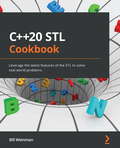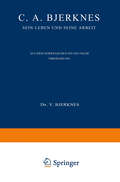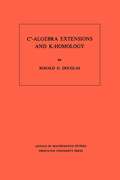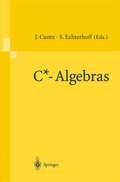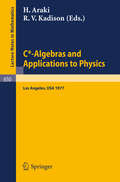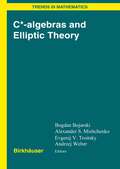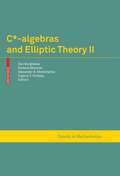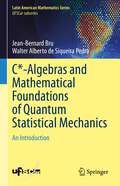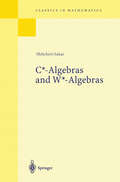- Table View
- List View
Busy Ant Maths - Pupil Book 4C (PDF)
by Jeanette Mumford Sandra Roberts Jo Power O'Keefe Elizabeth Jurgensen Steve Evans Eva Sassin Gwyneth Williamson Louise Forshaw Peter ClarkeThe Busy Ant Maths Pupil Book 4C contains three levels of differentiated challenge built-in to each lesson as well as extra consolidation and extension activities to ensure rapid progression for every child. "The Busy Ant Maths Pupil Book 4C contains three levels of differentiated challenge built-in to each lesson as well as extra consolidation and extension activities to ensure rapid progression for every child. Used in conjunction with the Teacher's Guide, Progress Guide and Homework Guide, this book is the best way to ensure that pupils achieve all the learning objectives of the new Primary Maths National Curriculum. "
Busy Ant Maths - YEAR 1 ACTIVITY BOOK 1C (PDF)
by Nicola Morgan Rachel Axten-Higgs Jo Power Series edited by Peter Clarke Illustrated by Steve Evans Eva Sassin Louise Forshaw Gwyneth Williamson Steven WoodCollins Busy Ant Maths Activity Book 1C is packed with exciting activities to help build and develop the skills needed to be successful in Maths. Each page features lots of hands-on, highly visual activities with a low level of text to give pupils confidence in learning maths. Activity Book 1C contains: * fun activities to consolidate the objectives covered in the daily maths lesson * objectives at the top of each page so the child is in control of their own learning * space to record answers, providing structure to each exercise * simple text. * engaging, colourful graphics.
Busy Ant Maths Year 2 Activity Book 2A (Busy Ant Maths Ser.)
by Jeanette Mumford Steven Wood Caroline Clissold Nicola Morgan Cherri Moseley Louise Wallace Sandra Roberts Jo Power Elizabeth Jurgensen Peter Clarke Steve Evans Eva Sassin Louise Forshaw Gwyneth WilliamsonUsed in conjunction with the Teacher's Guide, Progress Guide and Homework Guide, the Busy Ant Maths Pupil Book 2A is the best way to ensure that pupils achieve all the learning objectives of the new Primary Maths National Curriculum. Collins Busy Ant Maths Activity Book 2A is packed with exciting activities to help build and develop the skills needed to be successful in Maths. Each page features lots of hands-on, highly visual activities with a low level of text to give pupils confidence in learning maths.
Busy Ant Maths Year 2 Activity Book 2B (Busy Ant Maths Ser.)
by Louise Wallace Cherri Moeley Caroline Clissold Jo Power Nicola Morgan Peter Clarke Steve Evans Eva Sassin Louise Forshaw Gwyneth Williamson Steven WoodUsed in conjunction with the Teacher's Guide, Progress Guide and Homework Guide, the Busy Ant Maths Pupil Book 2B is the best way to ensure that pupils achieve all the learning objectives of the new Primary Maths National Curriculum. Collins Busy Ant Maths Activity Book 2B is packed with exciting activities to help build and develop the skills needed to be successful in Maths. Each page features lots of hands-on, highly visual activities with a low level of text to give pupils confidence in learning maths.
Busy Ant Maths Year 2 Activity Book 2C
by Nicola Morgan Caroline Clissold Jo Power Louise Wallace Cherri Moseley Peter Clarke Steve Evans Eva Sassin Louise Forshaw Gwyneth Williamson Steven WoodUsed in conjunction with the Teacher's Guide, Progress Guide and Homework Guide, the Busy Ant Maths Pupil Book 2C is the best way to ensure that pupils achieve all the learning objectives of the new Primary Maths National Curriculum. Collins Busy Ant Maths Activity Book 2C is packed with exciting activities to help build and develop the skills needed to be successful in Maths. Each page features lots of hands-on, highly visual activities with a low level of text to give pupils confidence in learning maths.
Busy Ant Problem Solving and Reasoning 2 (PDF)
by Peter ClarkePupils can quickly get to grips with KS1 problem solving and reasoning by completing activities categorised by topic and question type. Fully in line with the new National Curriculum. Problem solving and reasoning have been key focuses within primary maths since the introduction of the 2014 curriculum, and the focus on 'teaching for mastery'. It is essential that all pupils have access to problem solving and reasoning activities. Some key benefits to problem solving in maths include: * Helping pupils grasp diverse mathematical concepts and understand the application of the subject * Enhancing strategic thinking * Developing transferable skills This book consists of three different types of mathematical problem solving challenges: 1. Solving mathematical problems. This involves pupils solving problems 'within' mathematics itself, recognising patterns and relationships, making conjectures and generalisations, and explaining and justifying conclusions. 2. Reasoning mathematically. This involved pupils using logical thinking to solve problems, focusing on making conjectures and generalisations, and explaining and justifying conclusions using appropriate language. 3. Using & applying mathematics in real-world contexts. This involves pupils engaging in challenges that require them to use and apply their mathematical knowledge and skills in open-ended, real-world contexts.
Butterfly Optimization Algorithm: Theory and Engineering Applications (SpringerBriefs in Applied Sciences and Technology)
by Tarun Kumar Sharma Om Prakash VermaThis book presents theory and applications of recently introduced butterfly optimization algorithm (BOA). It also highlights hybridization process in the basic structure of BOA with in-depth analysis of complexity. This book also describes the constraint handling process. The newly introduced variant is implemented and validated on a set of linear and nonlinear real works problems of engineering and pulp and paper industry. The simulated results are compared with most of the basic algorithms. Comparative and nonparametric statistical result analysis illustrates the efficacy of the algorithm.
Buttress’s World Guide to Abbreviations of Organizations
by L. PitmanThe previous edition of this directory extended its coverage of the Far East, Australasia and Latin America, areas previously under-represented. For this new edition emphasis has been given to increasing the number of entries for organizations from Britain, the United States and Australia, and particular attention has been paid to new political organizations in Central and Eastern Europe and the former Soviet Union. The number of entries included has gone up to over 68,000 of which over 9,000 are new or amended. Cross-references from defunct organizations in the previous edition have been deleted, and references (indicated by ex and now) added for organizations which have changed their name since the previous edition. As before, the range of organizations included is broad and only purely local organizations have been excluded. This directory therefore lists official and unofficial organizations, national and international, on all SUbjects: political, economic and social. Acronyms of parent bodies of subsidiary organizations are given where appropriate and equivalencies are used to link acronyms in different languages for the same organization. Further information about the organizations listed can be found in the sources listed in the bibliography. I would like to thank Henry Heaney and Graeme Mackintosh for their advice, and David Grinyer for his technical support. L. M. Pitman Bibliography Adams, R. (ed.) (1993) Centres & Bureaux: A Directory of UK Concentrations of Effort. Information and Expertise, 2nd edn, CBD Research, Beckenham. Barrett, lK. (1993) Encyclopedia of Women's Associations Worldwide, Gale, London.
BWL-Formeln für Dummies (Für Dummies)
by Tobias AmelyFormeln und Kennzahlen verstehen, berechnen und interpretieren. Sind betriebswirtschaftliche Formeln für Sie ein Buch mit sieben Siegeln? Das lässt sich ändern! Tobias Amely bietet Ihnen einen verständlichen und kompakten Überblick über die wichtigsten Formeln und Kennzahlen der Betriebswirtschaftslehre. Praktische Beispiele und Tipps helfen Ihnen, den Zusammenhang zu verstehen, in dem die Formel jeweils verwendet wird. So bleibt es nicht beim theoretischen Wissen allein, sondern Sie können die Formeln auch praktisch anwenden. Sie erfahren Wie Sie die Produktion optimieren Wie Sie lohnende Investitionen erkennen Wie Sie Finanzierungskosten minimieren Welche Kennzahlen die Bonität eines Unternehmens ausmachen
BWL kompakt und verständlich: Für IT-Professionals, praktisch tätige Ingenieure und alle Fach- und Führungskräfte ohne BWL-Studium
by Notger Carl Rudolf Fiedler William Jórasz Manfred KieselBWL-Wissen, wie es von Fach- und Führungskräften gefragt ist, die selbst keine BWL studiert haben. Zum Beispiel für IT-ler, die die Unternehmenszusammenhänge verstehen müssen. Oder für Ingenieure, Mathematiker und Naturwissenschaftler, die sich als Führungskräfte mehr als nur gut behaupten wollen. Kurz: Das Buch ist ein notwendiger Karrierebaustein für alle Nicht-BWLer. Der Leser erhält einen kompakten Überblick über die praxisrelevanten Teile der BWL. Die Themen werden übersichtlich und leicht verständlich anhand eines durchgehenden Fallbeispiels verdeutlicht.
By Parallel Reasoning
by Paul BarthaIn By Parallel Reasoning Paul Bartha proposes a normative theory of analogical arguments and raises questions and proposes answers regarding (i.) criteria for evaluating analogical arguments, (ii.) the philosophical justification for analogical reasoning, and (iii.) the place of scientific analogies in the context of theoretical confirmation.
By the Numbers: Numeracy, Religion, and the Quantitative Transformation of Early Modern England
by Jessica Marie OtisDuring the sixteenth and seventeenth centuries, English numerical practices underwent a complex transformation with wide-ranging impacts on English society. At the beginning of the early modern period, English men and women believed that God had made humans universally numerate, although numbers were not central to their everyday lives. Over the next two centuries, rising literacy rates and the increasing availability of printed books revolutionized modes of arithmetical practice and education. Ordinary English people began to use numbers and quantification to explain abstract phenomena as diverse as the relativity of time, the probability of chance events, and the constitution of human populations. These changes reflected their participation in broader early modern European cultural and intellectual developments such as the Reformation and the Scientific Revolution. By the eighteenth century, English men and women still believed they lived in a world made by God, but it was also a world made--and made understandable--by numbers.
By the Numbers: Numeracy, Religion, and the Quantitative Transformation of Early Modern England
by Jessica Marie OtisDuring the sixteenth and seventeenth centuries, English numerical practices underwent a complex transformation with wide-ranging impacts on English society. At the beginning of the early modern period, English men and women believed that God had made humans universally numerate, although numbers were not central to their everyday lives. Over the next two centuries, rising literacy rates and the increasing availability of printed books revolutionized modes of arithmetical practice and education. Ordinary English people began to use numbers and quantification to explain abstract phenomena as diverse as the relativity of time, the probability of chance events, and the constitution of human populations. These changes reflected their participation in broader early modern European cultural and intellectual developments such as the Reformation and the Scientific Revolution. By the eighteenth century, English men and women still believed they lived in a world made by God, but it was also a world made--and made understandable--by numbers.
C: From Theory to Practice
by George S. TselikisDesigned for a compulsory fundamental course, C: From Theory to Practice uses a hands-on approach to teach the C programming language, using numerous examples and a clear, concise presentation. Easy to use and classroom tested, this textbook includes more than 500 exercises and examples of progressive difficulty to help students in understanding al
C: From Theory to Practice, Second Edition
by George S. Tselikis Nikolaos D. TselikasThis easy-to-use, classroom-tested textbook covers the C programming language for computer science and IT students. Designed for a compulsory fundamental course, it presents the theory and principles of C. More than 500 exercises and examples of progressive difficulty aid students in understanding all the aspects and peculiarities of the C language. The exercises test students on various levels of programming and the examples enhance their concrete understanding of programming know-how. Instructor's manual and PowerPoint slides are available upon qualifying course adoption
C: From Theory to Practice, Second Edition
by George S. Tselikis Nikolaos D. TselikasThis easy-to-use, classroom-tested textbook covers the C programming language for computer science and IT students. Designed for a compulsory fundamental course, it presents the theory and principles of C. More than 500 exercises and examples of progressive difficulty aid students in understanding all the aspects and peculiarities of the C language. The exercises test students on various levels of programming and the examples enhance their concrete understanding of programming know-how. Instructor's manual and PowerPoint slides are available upon qualifying course adoption
C++20 Stl Cookbook: Leverage The Latest Features Of The Stl To Solve Real-world Problems (PDF)
by Bill WeinmanProven techniques to improve the efficiency of your programs using the Standard Template Library (STL) Key Features Become familiar with the latest features of C++20 and write better code using the STL Reduce the development time for your applications and enable faster deployment Get up and running with the new and leaner STL capabilities introduced in the latest release Book Description Fast, efficient, and flexible, the C++ programming language has come a long way and is used in every area of the industry to solve many problems. The latest version C++20 will see programmers change the way they code as it brings a whole array of features enabling the quick deployment of applications. This book will get you up and running with using the STL in the best way possible.
C. A. Bjerknes: Sein Leben und seine Arbeit
by Else BjerknesDieser Buchtitel ist Teil des Digitalisierungsprojekts Springer Book Archives mit Publikationen, die seit den Anfängen des Verlags von 1842 erschienen sind. Der Verlag stellt mit diesem Archiv Quellen für die historische wie auch die disziplingeschichtliche Forschung zur Verfügung, die jeweils im historischen Kontext betrachtet werden müssen. Dieser Titel erschien in der Zeit vor 1945 und wird daher in seiner zeittypischen politisch-ideologischen Ausrichtung vom Verlag nicht beworben.
C*-Algebra Extensions and K-Homology. (AM-95), Volume 95 (PDF)
by Ronald G. DouglasRecent developments in diverse areas of mathematics suggest the study of a certain class of extensions of C*-algebras. Here, Ronald Douglas uses methods from homological algebra to study this collection of extensions. He first shows that equivalence classes of the extensions of the compact metrizable space X form an abelian group Ext (X). Second, he shows that the correspondence X ⃗ Ext (X) defines a homotopy invariant covariant functor which can then be used to define a generalized homology theory. Establishing the periodicity of order two, the author shows, following Atiyah, that a concrete realization of K-homology is obtained.
C*-Algebras: Proceedings of the SFB-Workshop on C*-Algebras, Münster, Germany, March 8–12, 1999
by Joachim Cuntz Siegfried EchterhoffThis book contains a collection of articles provided by the participants of the SFB-workshop on C*-algebras, March 8 - March 12, 1999 which was held at the Sonderforschungsbereich "Geometrische Strukturen in der reinen Mathematik" of the University of Münster, Germany. The aim of the workshop was to bring together leading experts in the theory of C* -algebras with promising young researchers in the field, and to provide a stimulating atmosphere for discussions and interactions between the participants. There were 19 one-hour lectures on various topics like - classification of nuclear C* -algebras, - general K-theory for C* -algebras, - exact C* -algebras and exact groups, - C*-algebras associated to (infinite) matrices and C*-correspondences, - noncommutative prob ability theory, - deformation quantization, - group C* -algebras and the Baum-Connes conjecture, giving a broad overview of the latest developments in the field, and serving as a basis for discussions. We, the organizers of the workshop, were greatly pleased with the excellence of the lectures and so were led to the idea of publishing the proceedings of the conference. There are basically two kinds of contributions. On one side there are several articles giving surveys and overviews on new developments and im portant results of the theory, on the other side one finds original articles with interesting new results.
C*-Algebras and Applications to Physics: Proceedings, Second Japan-USA Seminar, Los Angeles, April 18-22, 1977 (Lecture Notes in Mathematics #650)
by H. Araki R. V. KadisonC*-algebras and Elliptic Theory (Trends in Mathematics)
by Dan Burghelea Richard Melrose Victor NistorThis book consists of reviewed original research papers and expository articles in index theory (especially on singular manifolds), topology of manifolds, operator and equivariant K-theory, Hopf cyclic cohomology, geometry of foliations, residue theory, Fredholm pairs and others, and applications in mathematical physics. The wide spectrum of subjects reflects the diverse directions of research for which the starting point was the Atiyah-Singer index theorem.
C*-algebras and Elliptic Theory II (Trends in Mathematics)
by Dan Burghelea Richard Melrose Alexander S. Mishchenko Evgenij V. TroitskyThis book consists of a collection of original, refereed research and expository articles on elliptic aspects of geometric analysis on manifolds, including singular, foliated and non-commutative spaces. The topics covered include the index of operators, torsion invariants, K-theory of operator algebras and L2-invariants. There are contributions from leading specialists, and the book maintains a reasonable balance between research, expository and mixed papers.
C*-Algebras and Mathematical Foundations of Quantum Statistical Mechanics: An Introduction (Latin American Mathematics Series)
by Jean-Bernard Bru Walter Alberto de Siqueira PedraThis textbook provides a comprehensive introduction to the mathematical foundations of quantum statistical physics. It presents a conceptually profound yet technically accessible path to the C*-algebraic approach to quantum statistical mechanics, demonstrating how key aspects of thermodynamic equilibrium can be derived as simple corollaries of classical results in convex analysis. Using C*-algebras as examples of ordered vector spaces, this book makes various aspects of C*-algebras and their applications to the mathematical foundations of quantum theory much clearer from both mathematical and physical perspectives. It begins with the simple case of Gibbs states on matrix algebras and gradually progresses to a more general setting that considers the thermodynamic equilibrium of infinitely extended quantum systems. The book also illustrates how first-order phase transitions and spontaneous symmetry breaking can occur, in contrast to the finite-dimensional situation. One of the unique features of this book is its thorough and clear treatment of the theory of equilibrium states of quantum mean-field models. This work is self-contained and requires only a modest background in analysis, topology, and functional analysis from the reader. It is suitable for both mathematicians and physicists with a specific interest in quantum statistical physics.
C*-Algebras and W*-Algebras (Classics in Mathematics)
by Shoichiro SakaiFrom the reviews: "This book is an excellent and comprehensive survey of the theory of von Neumann algebras. It includes all the fundamental results of the subject, and is a valuable reference for both the beginner and the expert." Mathematical Reviews
